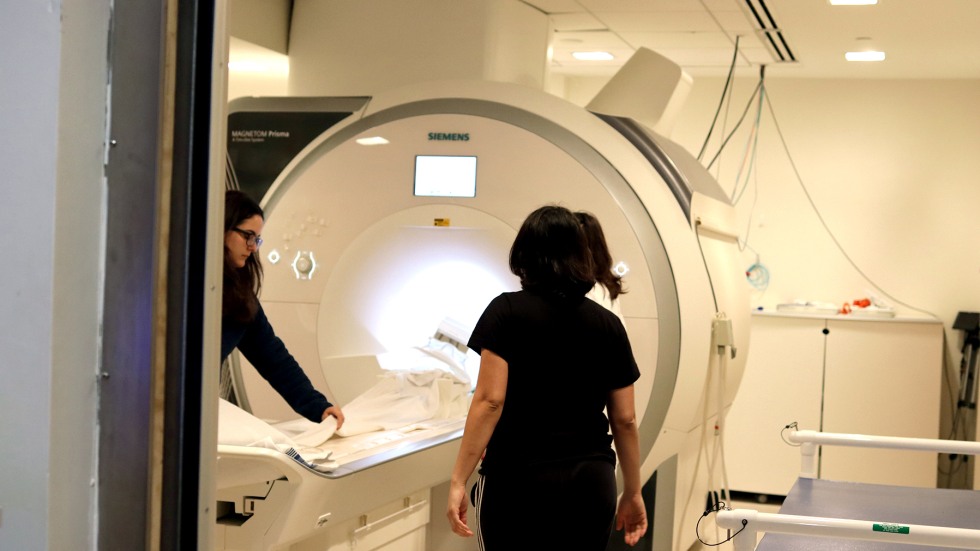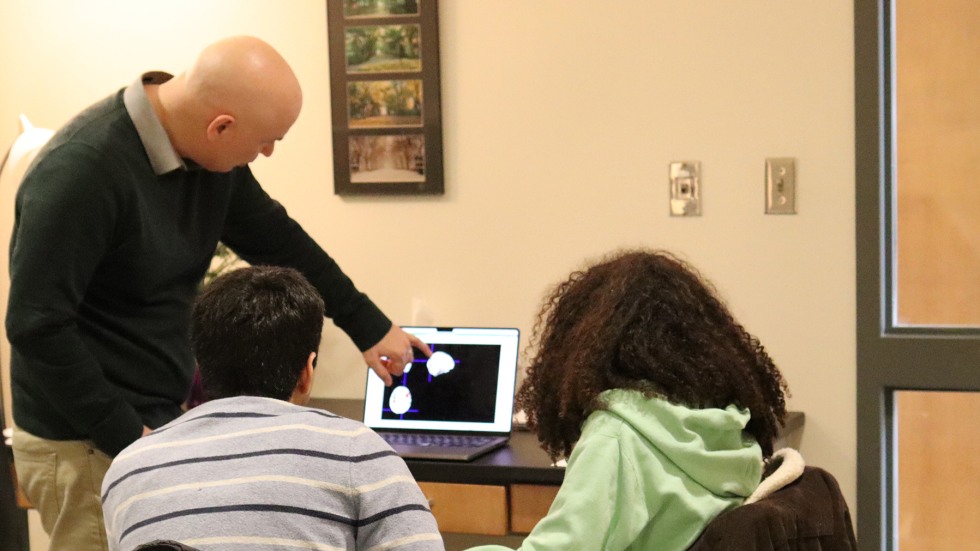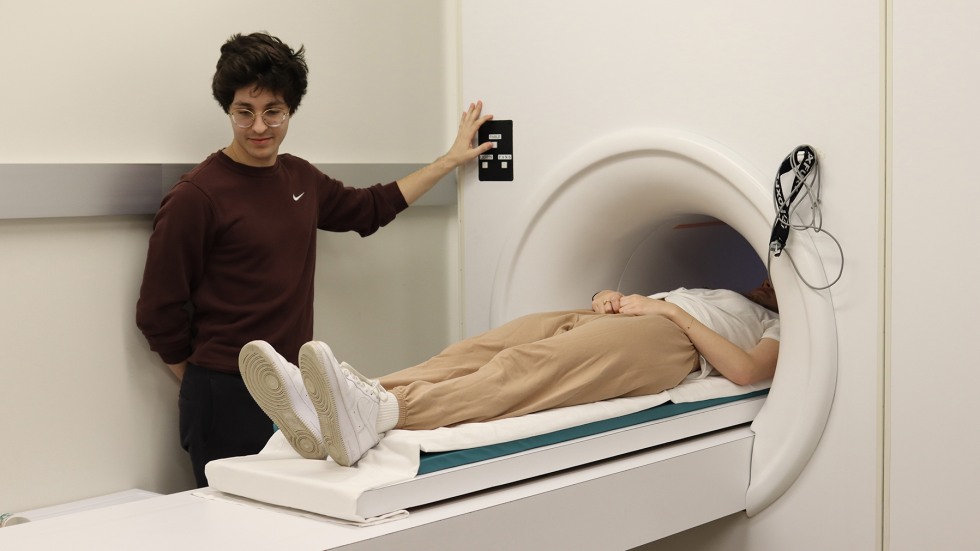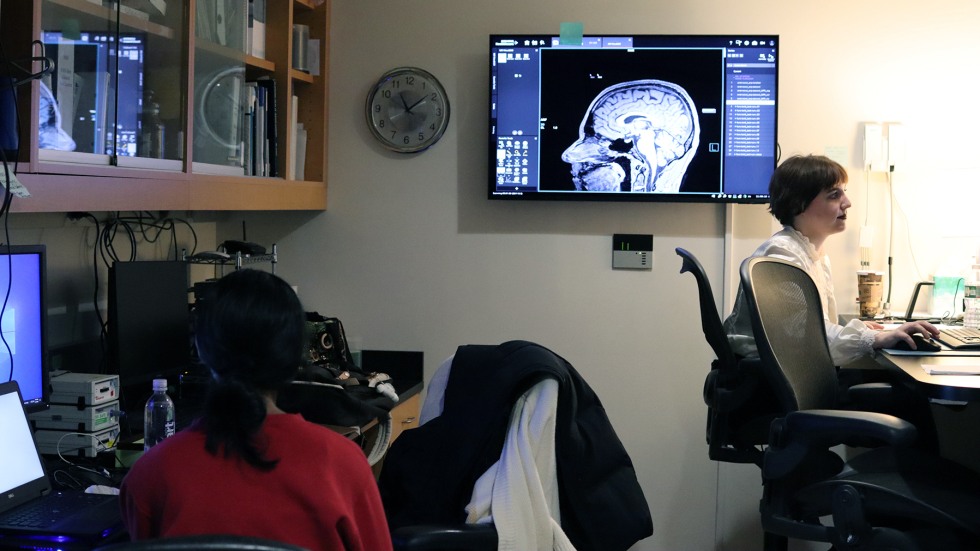PROVIDENCE, R.I. [Brown University] — On a recent day in the MRI Research Facility in the Sidney Frank Hall for the Life Sciences on Brown’s campus, it wasn’t too difficult to tell which undergraduates were planning to go inside the magnetic resonance imaging (MRI) machine.
While most of the assembled students were dressed in sweatpants and T-shirts, the ones who volunteered to go into the machine to have their brains scanned were completely metal-free: No jewelry, no belts, no shoes. They were scrupulous about this, since screening MRI participants and knowing what one can and can’t wear inside the powerfully magnetic machine is part of the course they’re taking.
The eight students gathered at the research facility are enrolled in the Functional Neuroimaging course taught by David Badre, a professor of cognitive, linguistic and psychological sciences who is affiliated with Brown’s Carney Institute for Brain Science. The goal of the spring course is to train students in the practice and use of MRI to advance cognitive neuroscience research and it provides students with the opportunity to go inside the MRI machine, operate it and participate in other key ways.
“We are scientists, we work in the lab, and this MRI facility is our lab,” Badre said. “So we need specific training on how to properly use this equipment.”
For two Saturdays in April, the class convened inside the facility, a 3,000-square-foot research suite that features a state-of-the-art Siemens 3 Tesla PRISMA scanner. While the facility is a resource available to researchers at Brown and Brown-affiliated hospitals, it’s not commonly used by undergraduates.
The two interactive class sessions, which have come to be known as ScanFest, are a chance for students learn how to prepare research subjects, set up the machinery and monitor activity in the MRI control room.
“It’s very rare for a university to donate time to undergraduate students for scanning practice and training,” Badre said.
The scanning sessions have always been a high point of the course, and they were even more highly anticipated this year: This was the first time that ScanFest has been held since 2020, when Badre adopted a remote format for the class in order to comply with University safety guidelines during the COVID-19 pandemic.
“By coming in here and using fMRI, which is functional magnetic resonance imaging, we teach the practical science in a very serious and hands-on way, but it also lets students be curious and experience the joy of scientific discovery,” Badre said.
Getting the most out of the MRI machine
As part of the course, the students design an experiment that uses functional magnetic resonance imaging — fMRI measures brain activity by detecting changes associated with blood flow. Across the two sessions, eight or so students volunteer to be research subjects and go inside the machine to perform cognitive tasks while the having their bran activity recorded. Lynn Fanella, the MRI technician who manages the Brown facility, attends both sessions to offer students a hands-on lesson in operating the machine and reading its output.
The course also teaches students how to design a successful cognitive research experiment. fMRI is an exciting method that allows researchers to visualize the brain in a non-invasive way, Badre said, but it’s still just a tool, and getting answers depends what questions are asked and how they’re presented.
The experiments need to be relatively simple so that the students can get clear answers from the scans, said Badre, who has been teaching the class since 2008.



